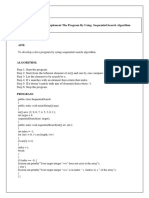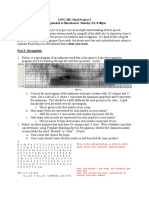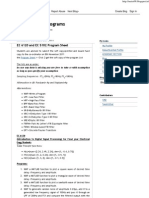0% found this document useful (0 votes)
16 views13 pagesOops Lab Observation
The document outlines a Java application that implements sequential search, binary search, and quadratic sorting algorithms (insertion and selection sort). It also describes the development of stack and queue data structures using classes and objects, detailing the algorithms and providing code examples for each implementation. The application successfully executes the searching and sorting techniques as well as the stack and queue functionalities.
Uploaded by
sivalingamjetlCopyright
© © All Rights Reserved
We take content rights seriously. If you suspect this is your content, claim it here.
Available Formats
Download as PDF, TXT or read online on Scribd
0% found this document useful (0 votes)
16 views13 pagesOops Lab Observation
The document outlines a Java application that implements sequential search, binary search, and quadratic sorting algorithms (insertion and selection sort). It also describes the development of stack and queue data structures using classes and objects, detailing the algorithms and providing code examples for each implementation. The application successfully executes the searching and sorting techniques as well as the stack and queue functionalities.
Uploaded by
sivalingamjetlCopyright
© © All Rights Reserved
We take content rights seriously. If you suspect this is your content, claim it here.
Available Formats
Download as PDF, TXT or read online on Scribd
/ 13
























































































